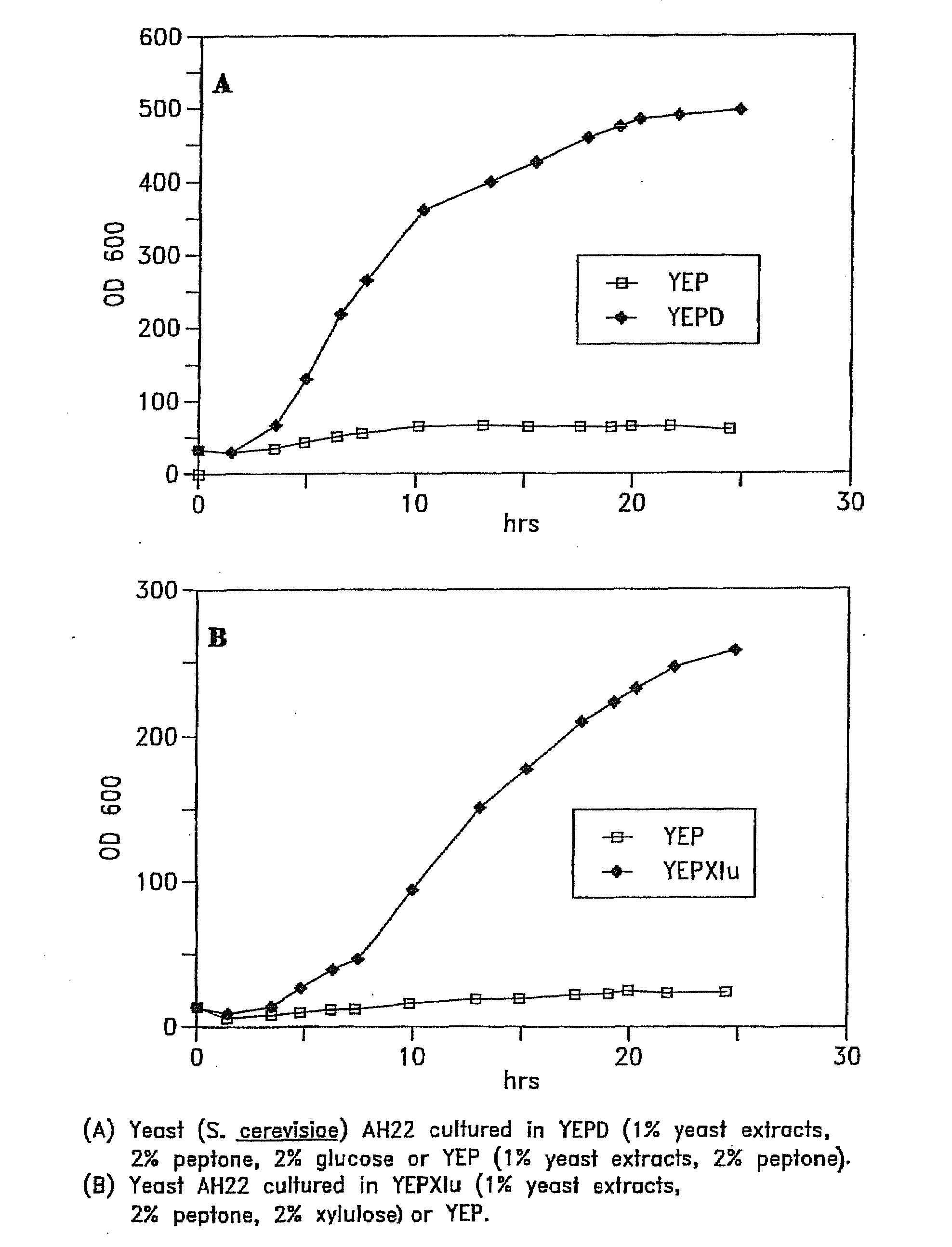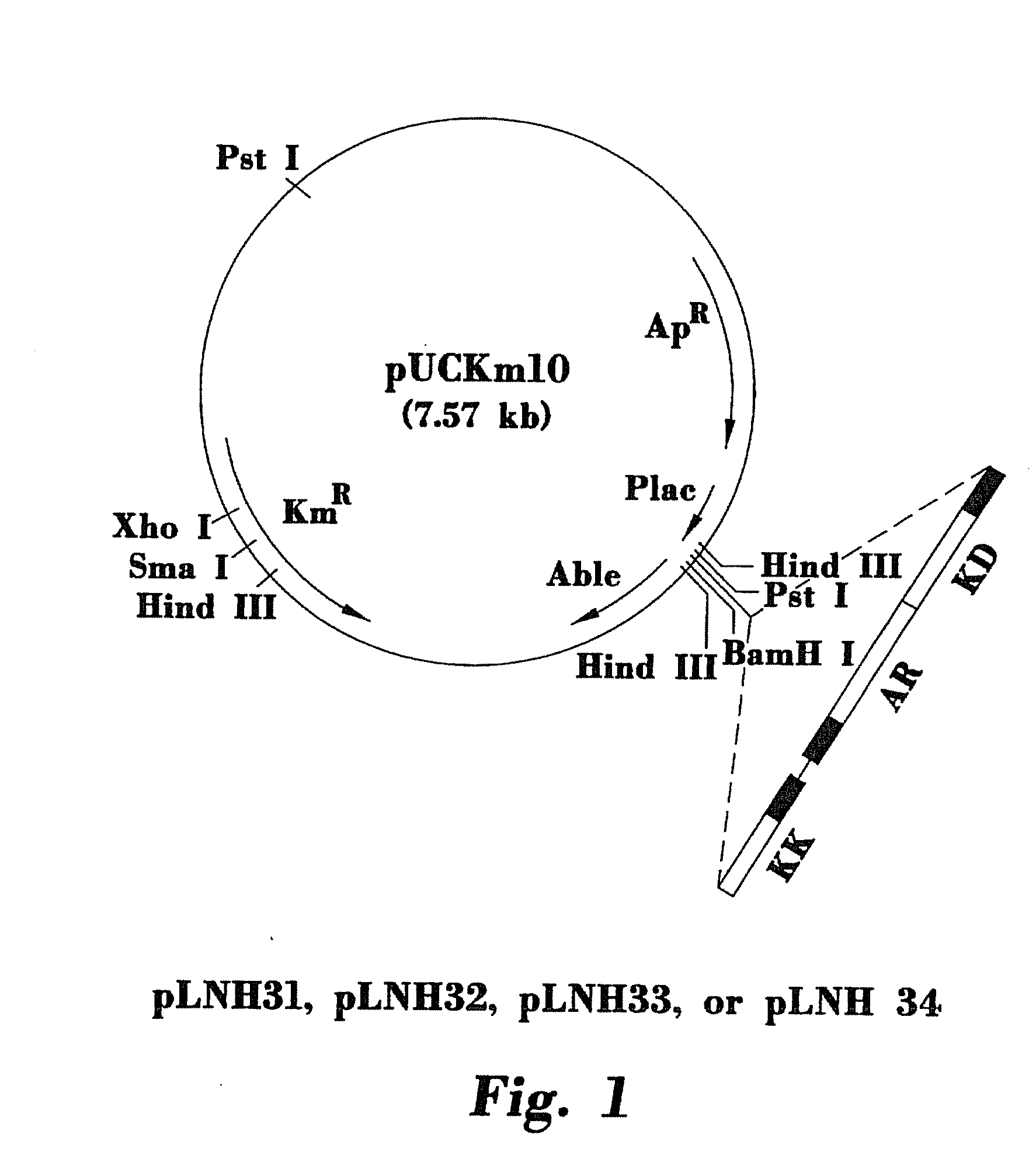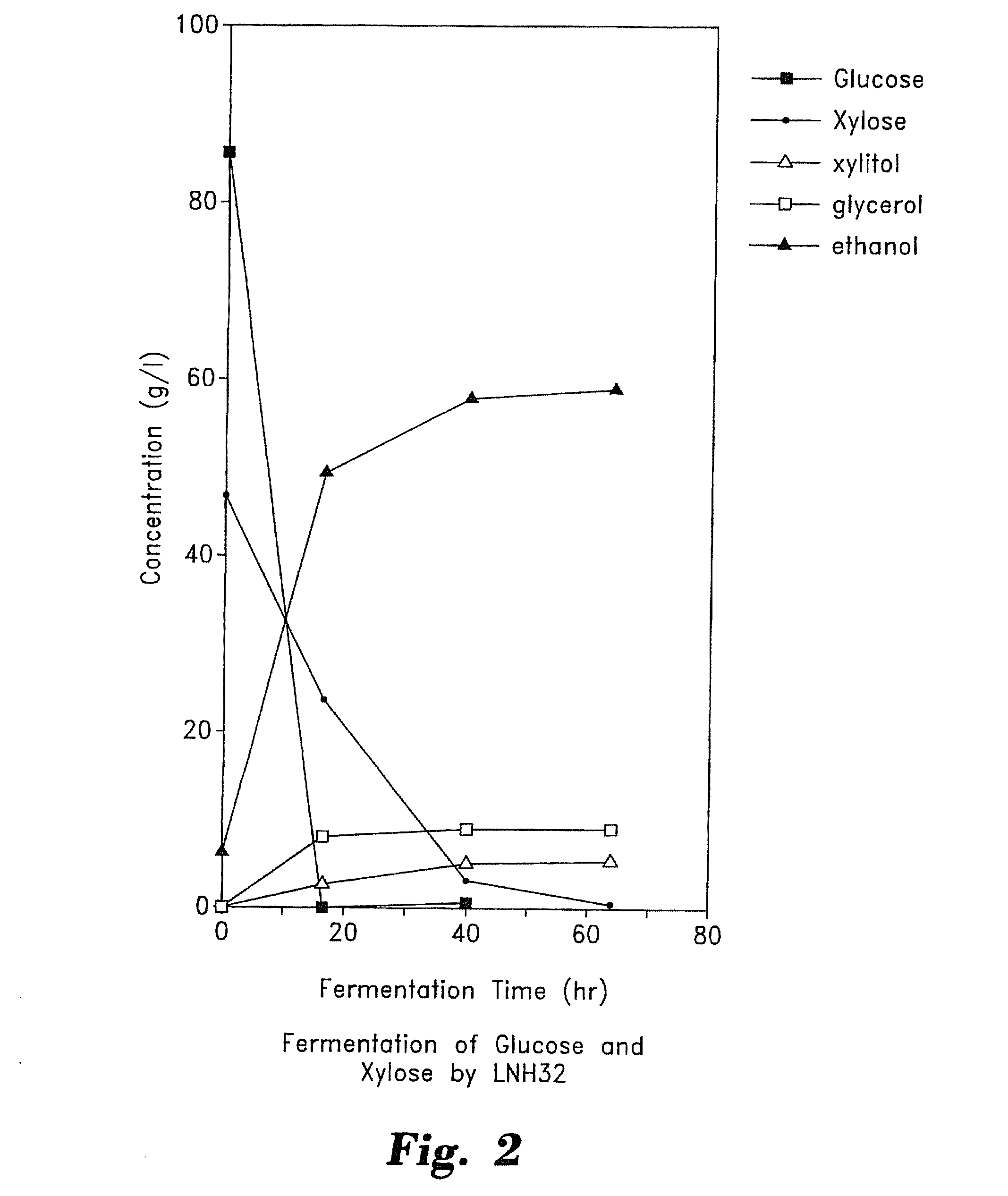Stable recombinant yeasts for fermenting xylose to ethanol
a technology of xylose and ethanol, which is applied in the field of genetically engineered microorganisms, can solve the problems of inability to ferment xylose, inability to effectively ferment glucose and xylose, and inability to use as feedstock
- Summary
- Abstract
- Description
- Claims
- Application Information
AI Technical Summary
Benefits of technology
Problems solved by technology
Method used
Image
Examples
example 1
Synthesis of the 5S rDNA Fragment by PCR
[0058]For the synthesis of the 5S rDNA fragment by PCR (to serve as the yeast DNA sequence for targeting high-copy-number integration into the yeast chromosome), the following oligonucleotides were synthesized and used as the primers for PCR reactions according to the published 5S rDNA sequence (Valenzuela et al., 1977). In addition to the 5S rDNA sequence, additional nucleotides specifying the Sal I restriction site were also added to the 5′ terminal of primers to facilitate the cloning of the PCR synthesized 5S rDNA into an E. coli plasmid.
Oligonucleotide I:TTAGTCGACGTCCCTCCAAATGTAAAATGG.Oligonocleotide II:AATGTCGACGTAGAAGAGAGGGAAATGGAG
[0059]Chromosomal DNA isolated from fusion yeast 1400 was used as the template for the PCR reaction. The PCR synthesized 5S rDNA fragment was first cloned into the E. coli pBluescript II KS(−) plasmid (Stratagene Cloning Systems, La Jolla, Calif.) at its SalI site. The resulting plasmid was designated as pKS-r...
example 2
Insertion of XhoI site into Cloned 5s rDNA Sequence
[0060]The nucleotide sequence between −29 and −56 of the 5S rDNA sequence (Valenzuela et al., 1977) was modified by oligonucleotide-mediated site-specific mutagenesis (Kunkel, 1985; Kunkel et al., 1987). As a result, an XhoI restriction site was inserted at the specific site described above. The protocol provided by Bio-Rad Laboratories, Inc. for oligonucleotide-mediated site-specific mutagenesis was followed to accomplish this task, except that pKS plasmid was used rather than plasmid pTZ18U or pTZ19U. The resulting plasmid containing the mutated 5S rDNA was designated as pKS-5S rDNA(XhoI). The following oligonucleotide was used to carry out the site-specific mutagenesis: GAGGGCAGGCTCGAGACATGTTCAGTAGG.
example 3
Isolation of DNA Fragments from S. Cerevisiae DNA or Other DNA Functioning as ARS in Yeasts
[0061]S. cerevisiae DNA (or DNA from other yeasts or other organisms) was digested with Sau3A restriction enzyme and cloned into the Bam H1 site of pUCKm6 (FIG. 12) (Ho, et al., 1984). The resulting bank of plasmids was used to transform S. cerevisiae. Those transformants that were capable of growing on plates containing YEPD (1% yeast extract, 2% peptone, and 2% glucose) and 50 μg / ml geneticin and which were also positive for the penicillinase test (Chevallier and Algle, 1979) were selected. The plasmids from the selected true transformants were recovered by a procedure similar to that described by Ward (1990).
[0062]The yeast DNA fragments inserted in pUCKm6 (FIG. 12) and recovered from the yeast transformants should all contain a segment of DNA that can function as an ARS (autonomous replicating sequence) in S. cerevisiae, possibly in other yeasts as well. The DNA inserts were digested with ...
PUM
| Property | Measurement | Unit |
|---|---|---|
| concentrations | aaaaa | aaaaa |
| concentrations | aaaaa | aaaaa |
| selection pressure | aaaaa | aaaaa |
Abstract
Description
Claims
Application Information
 Login to View More
Login to View More - R&D
- Intellectual Property
- Life Sciences
- Materials
- Tech Scout
- Unparalleled Data Quality
- Higher Quality Content
- 60% Fewer Hallucinations
Browse by: Latest US Patents, China's latest patents, Technical Efficacy Thesaurus, Application Domain, Technology Topic, Popular Technical Reports.
© 2025 PatSnap. All rights reserved.Legal|Privacy policy|Modern Slavery Act Transparency Statement|Sitemap|About US| Contact US: help@patsnap.com



